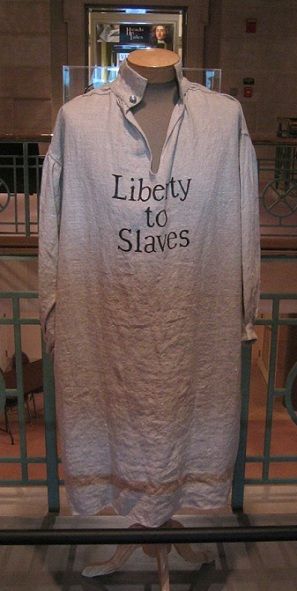
Black Loyalists were African-Americans who sided with the Loyalists during the American Revolutionary War. In particular, the term refers to men who escaped enslavement by Patriot masters and served on the Loyalist side because of the Crown's guarantee of freedom.
Thomas Peters, born Thomas Potters, was a veteran of the Black Pioneers, fighting for the British in the American Revolutionary War. A Black Loyalist, he was resettled in Nova Scotia, where he became a politician and one of the "Founding Fathers" of the nation of Sierra Leone in West Africa. Peters was among a group of influential Black Canadians who pressed the Crown to fulfill its commitment for land grants in Nova Scotia. Later they recruited African-American settlers in Nova Scotia for the colonisation of Sierra Leone in the late eighteenth century.
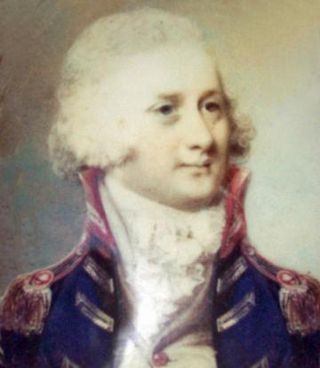
Lieutenant John Clarkson was a Royal Navy officer and abolitionist, the younger brother of Thomas Clarkson, one of the central figures in the abolition of slavery in England and the British Empire at the close of the 18th century. As agent for the Sierra Leone Company, Lieutenant Clarkson was instrumental in the founding of Freetown, today Sierra Leone's capital city, as a haven for chiefly formerly enslaved African-Americans first relocated to Nova Scotia by the British military authorities following the American Revolutionary War.
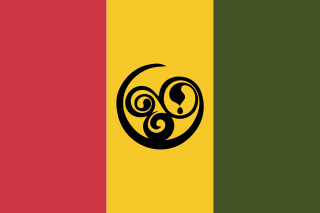
Black Nova Scotians are an ethnic group consisting of Black Canadians whose ancestors primarily date back to the Colonial United States as slaves or freemen, later arriving in Nova Scotia, Canada, during the 18th and early 19th centuries. As of the 2021 Census of Canada, 28,220 Black people live in Nova Scotia, most in Halifax. Since the 1950s, numerous Black Nova Scotians have migrated to Toronto for its larger range of opportunities. The first recorded free African person in Nova Scotia, Mathieu da Costa, a Mikmaq interpreter, was recorded among the founders of Port Royal in 1604. West Africans escaped slavery by coming to Nova Scotia in early British and French Colonies in the 17th and 18th centuries. Many came as enslaved people, primarily from the French West Indies to Nova Scotia during the founding of Louisbourg. The second major migration of people to Nova Scotia happened following the American Revolution, when the British evacuated thousands of slaves who had fled to their lines during the war. They were given freedom by the Crown if they joined British lines, and some 3,000 African Americans were resettled in Nova Scotia after the war, where they were known as Black Loyalists. There was also the forced migration of the Jamaican Maroons in 1796, although the British supported the desire of a third of the Loyalists and nearly all of the Maroons to establish Freetown in Sierra Leone four years later, where they formed the Sierra Leone Creole ethnic identity.

David George was an African-American Baptist preacher and a Black Loyalist from the American South who escaped to British lines in Savannah, Georgia; later he accepted transport to Nova Scotia and land there. He eventually resettled in Freetown, Sierra Leone where he would eventually die. With other enslaved people, George founded the Silver Bluff Baptist Church in South Carolina in 1775, the first black congregation in the present-day United States. He was later affiliated with the First African Baptist Church of Savannah, Georgia. After migration, he founded Baptist congregations in Nova Scotia and Freetown, Sierra Leone. George wrote an account of his life, an important early slave narratives.
Boston King was a former American slave and Black Loyalist, who gained freedom from the British and settled in Nova Scotia after the American Revolutionary War. He later immigrated to Sierra Leone, where he helped found Freetown and became the first Methodist missionary to African indigenous people.
Settler Town is the oldest part of the city of Freetown, now the capital of Sierra Leone, and was the first home of the Nova Scotian Settlers.
The Snowball family was a prominent settler Creole family of Nova Scotian descent. The Snowballs were originally African-American slaves from "Princess Ann County, Virginia" and were formerly the property of Richard Murray. Nathaniel Snowball, who was the son of Violet Snowball and the brother of Mary Snowball, was only 12 years old when he was recorded in the Book of Negroes and described as a "fine boy. Formerly the property of Richard Murray of Princess Ann County, Virginia; left him 7 years ago". Nathaniel became a prominent settler and the patriarch of the Snowball family in Settler Town, Sierra Leone.
Moses "Daddy Moses" Wilkinson or "Old Moses" was an American Wesleyan Methodist preacher and Black Loyalist. His ministry combined Old Testament divination with African religious traditions such as conjuring and sorcery. He gained freedom from slavery in Virginia during the American Revolutionary War and was a Wesleyan Methodist preacher in New York and Nova Scotia. In 1791, he migrated to Sierra Leone, preaching alongside ministers Boston King and Henry Beverhout. There, he established the first Methodist church in Settler Town and survived a rebellion in 1800.
Cato Perkins was an enslaved African-American man from Charleston, South Carolina, who became a missionary to Sierra Leone.

Birchtown is a community and National Historic Site in the Canadian province of Nova Scotia, located near Shelburne in the Municipal District of Shelburne County. Founded in 1783, the village was the largest settlement of Black Loyalists and the largest free settlement of ethnic Africans in North America in the eighteenth century. The two other significant Black Loyalist communities established in Nova Scotia were Brindley town and Tracadie. Birchtown was named after British Brigadier General Samuel Birch, an official who helped lead the evacuation of Black Loyalists from New York.
Ebenezer Methodist Church is an historical Methodist church based in Freetown, Sierra Leone. It was founded by the original African American founders of the Colony of Sierra Leone. Ebenezer Primary School was located in the basement of the church. Ebenezer was founded by wealthy Nova Scotian settler merchants who had broken away from the Rawdon Street Methodist Church following a dispute.
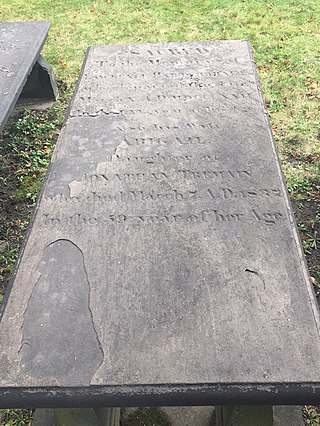
The Nova Scotian Settlers, or Sierra Leone Settlers, were African Americans who founded the settlement of Freetown, Sierra Leone and the Colony of Sierra Leone, on March 11, 1792. The majority of these black American immigrants were among 3,000 African Americans, mostly former slaves, who had sought freedom and refuge with the British during the American Revolutionary War, leaving rebel masters. They became known as the Black Loyalists. The Nova Scotian Settlers were jointly led by African American Thomas Peters, a former soldier, and English abolitionist John Clarkson. For most of the 19th century, the Settlers resided in Settler Town and remained a distinct ethnic group within the Freetown territory, tending to marry among themselves and with Europeans in the colony.
Sierra Leoneans in the United Kingdom are citizens or residents of the United Kingdom who are of Sierra Leonean descent. In 2001, there were 17,048 Sierra Leonean-born residents of the UK.
Abel Nathaniel Bankole Stronge is a Sierra Leonean politician who was Speaker of the Parliament of Sierra Leone from 2007 through November 2013. He is a member of the ruling All People's Congress (APC) and represents the Western Area Urban District. Bankole Stronge succeeded Edmund Cowan of the Sierra Leone People's Party as speaker of Parliament after the 2007 Sierra Leone Presidential and Legislative elections.

The Cotton Tree was a kapok tree that was a historic symbol of Freetown, the capital city of Sierra Leone. The Cotton Tree gained importance in 1792 when a group of formerly enslaved African Americans, who had gained their freedom by fighting for the British during the American Revolutionary War, settled the site of modern Freetown. These former Black Loyalist soldiers, also known as Black Nova Scotians, resettled in Sierra Leone and founded Freetown on 11 March 1792. The descendants of the Nova Scotian settlers form part of the Sierra Leone Creole ethnicity today.

Dr. Noah Arthur William Cox-George, also known as N. A. Cox-George, was a Sierra Leone Creole economist and academic whose work, Finance and Development in West Africa: The Sierra Leone Experience, was one of the early works that examined and detailed the economic history of a former British West African Colony.

The Sierra Leone Creole people are an ethnic group of Sierra Leone. The Sierra Leone Creole people are descendants of freed African-American, Afro-Caribbean, and Liberated African slaves who settled in the Western Area of Sierra Leone between 1787 and about 1885. The colony was established by the British, supported by abolitionists, under the Sierra Leone Company as a place for freedmen. The settlers called their new settlement Freetown. Today, the Sierra Leone Creoles are 1.2 percent of the population of Sierra Leone.
Abraham Hazeley (1784–1847) was a Nova Scotian settler in Sierra Leone. He was the founder of what was to become one of the most prominent Creole families in the country.
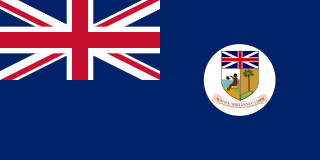
The Colony and Protectorate of Sierra Leone was the British colonial administration in Sierra Leone from 1808 to 1961, part of the British Empire from the abolitionism era until the decolonisation era. The Crown colony, which included the area surrounding Freetown, was established in 1808. The protectorate was established in 1896 and included the interior of what is today known as Sierra Leone.









